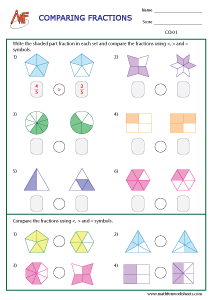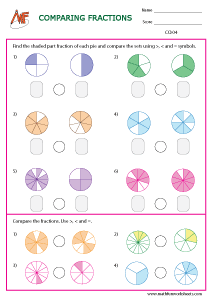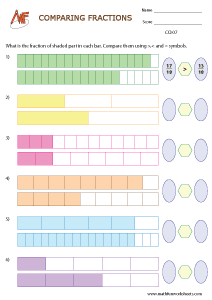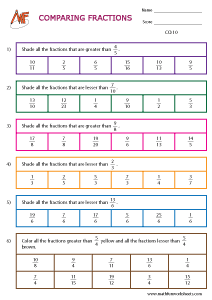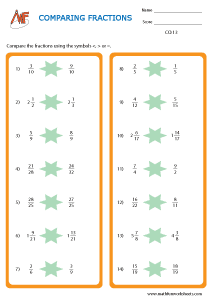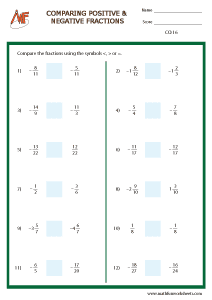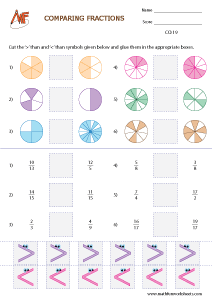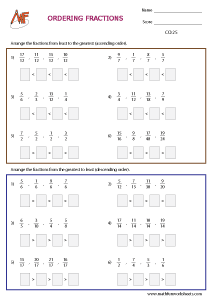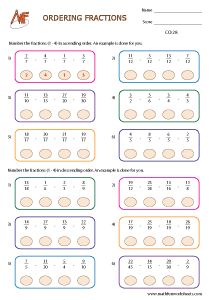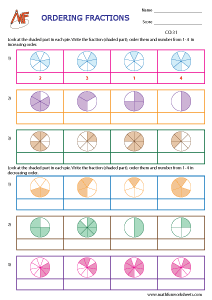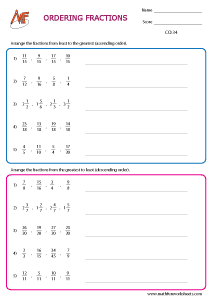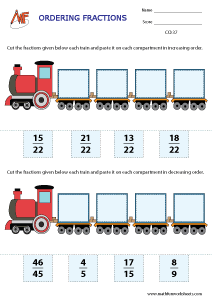- Home
- Numbers & Operations
- Fractions
- Comparing and Ordering fractions
Browse by Topics
- English Worksheets
- Science Worksheets
- Kid's Corner
- Numbers & Operations
- Addition
- Subtraction
- Multiplication
- Division
- Decimals
- Place Value
- Roman Numerals
- Skip Counting
- Odd & Even Numbers
- Patterns
- Cardinal & Ordinal Numbers
- Rounding Numbers
- Estimation of Numbers
- Estimation of Time & Money
- Counting & Cardinality
- Comparing Numbers
- Ordering Numbers
- Fractions
- Prime & Composite Numbers
- Squares & Cubes
- Square & Cube Root
- Divisibility Rules
- Factors & Multiples
- Data Handling
- Algebra
- Ratio
- Least Common Factor
- Greatest Common Factor
- Percent Worksheets
- Proportion
- Order of Operations
- Scientific Notation
- Exponents
- Algebraic Expressions
- Evaluating Algebraic Expressions
- Simplifying Algebraic Expressions
- Graphing Lines
- Point Slope Form
- Two Point Form
- Two Intercept Form
- Equations
- Identifying Functions
- Evaluating Functions
- Function Table
- Domain and Range
- Trigonometric Charts
- Quadrants
- Polynomials
- Measurement
- Geometry
- Word Problems
Comparing and Ordering fractions Worksheets
Comparing and Ordering Fractions Worksheets are essential for helping students develop a strong understanding of fraction values and relationships. These worksheets provide structured, engaging practice for learners in grade 4 through grade 6, guiding them to compare, order, and simplify fractions accurately and confidently. With consistent use, students master this critical math concept.
Comparing fractions and ordering fractions are based on a different concept. When you compare and order fractions, the first step is to make the denominators the same.
- Comparing like fractions
- Comparing unlike fractions
- Comparing unit fractions

Comparison of unlike fractions:
We have two easy methods to comapre unlike fractions
- By converting them into like fractions (Denominators are made the same)
Unlike fractions are first converted into like fractions. Like fractions are compared easily using their numerators. Follow the example given below.
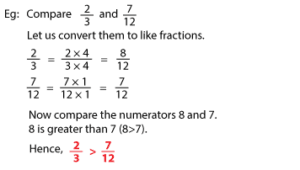
2. By Cross Multiplication
Cross multiplication is another quick and easy method to compare fractions. Consider two fractions.
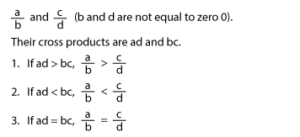
Comparision of unit fractions:
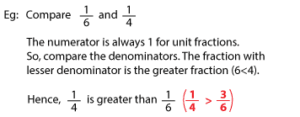
Similarly, any number of fractions can be compared. Upon comparing, they can be ordered in ascending order (increasing order) and descending order (decreasing order). These worksheets have exercises to compare and order fractions. Download all materials for free.
Comparing and Ordering fractions Worksheets
Compare shaded part fraction - Pie

Compare shaded part fraction - Pie
Compare shaded part fraction - Bar

Compare shaded part fraction - Bar
Compare the fractions (negative numbers)

Compare the fractions (negative numbers)
Cut Paste activity - Greater / Lesser than

Cut Paste activity - Greater / Lesser than
Cut Paste activity - Fractions

Cut Paste activity - Fractions
Arranging fractions - Ascending / Descending

Arranging fractions - Ascending / Descending
Arranging fractions - Pictures

Arranging fractions - Pictures
Related Worksheets: Representing Fractions, Fraction Addition, Fraction Subtraction
Each worksheet begins with simple problems that compare fractions with like denominators. Then, students move on to more complex problems involving unlike denominators and mixed numbers. This gradual increase in difficulty helps build both confidence and skills. Teachers use these worksheets in the classroom for instruction, practice, and assessments. Parents also find them helpful for additional practice at home.
As students progress through each grade, the complexity of the tasks grows. For example, grade 4 students might begin with visual comparisons, while grade 6 students handle abstract problems that require converting and simplifying fractions. This ensures that learners at every level are challenged appropriately and supported in their growth.
Additionally, these worksheets often include answer keys and detailed explanations. These tools promote independent learning and allow students to check their work. Some worksheets also feature real-life applications, making lessons more relevant and engaging.
In conclusion, these worksheets are valuable for building fraction fluency across multiple grade levels. They support classroom instruction, homework, and self-study. With clear instructions, varied problem types, and targeted skill development, these worksheets help students succeed in understanding and applying fraction concepts.

